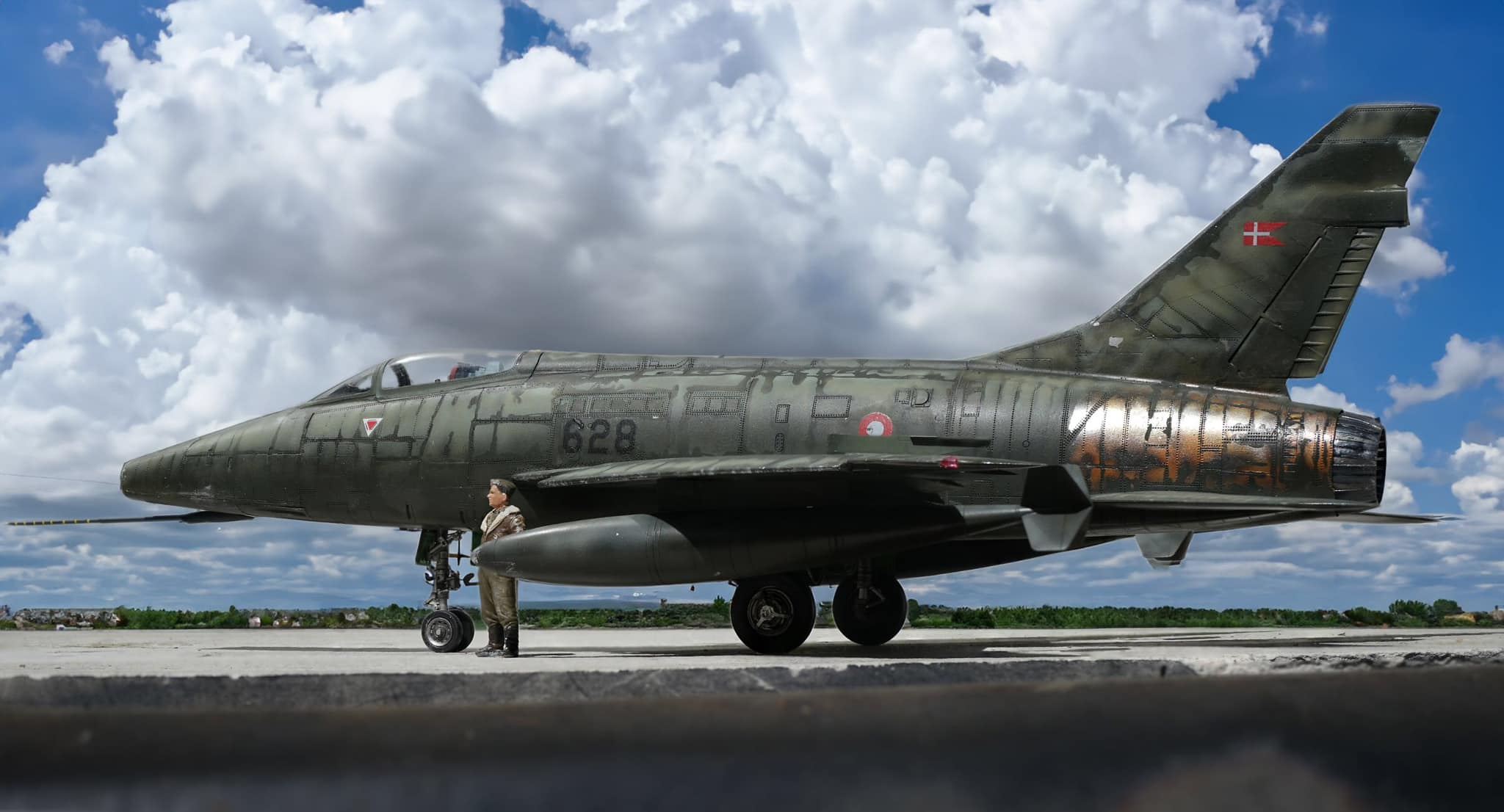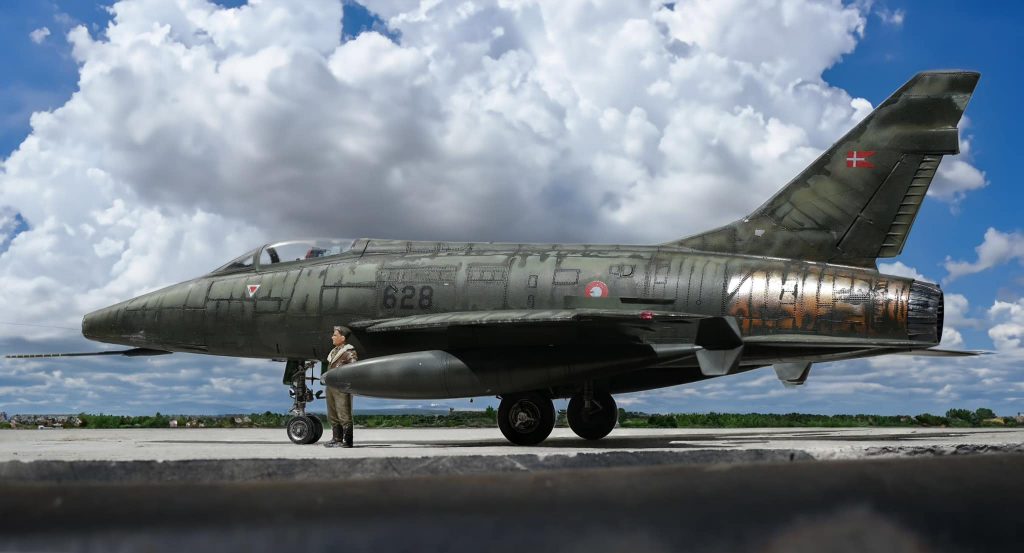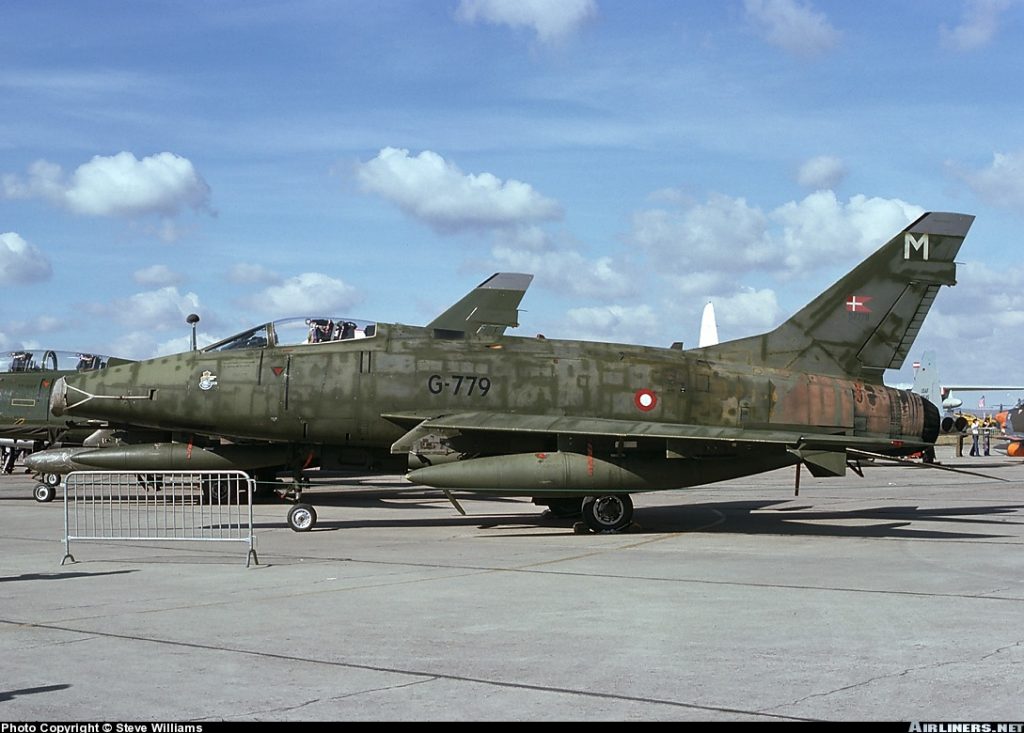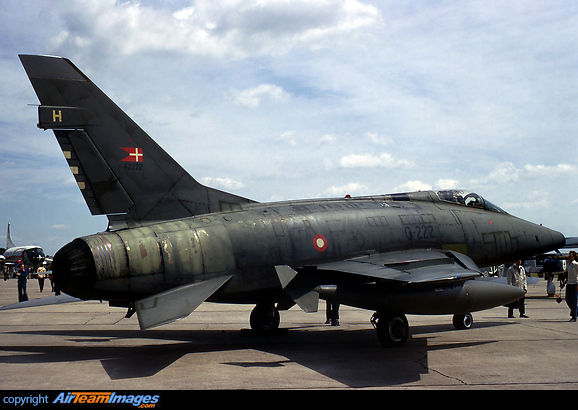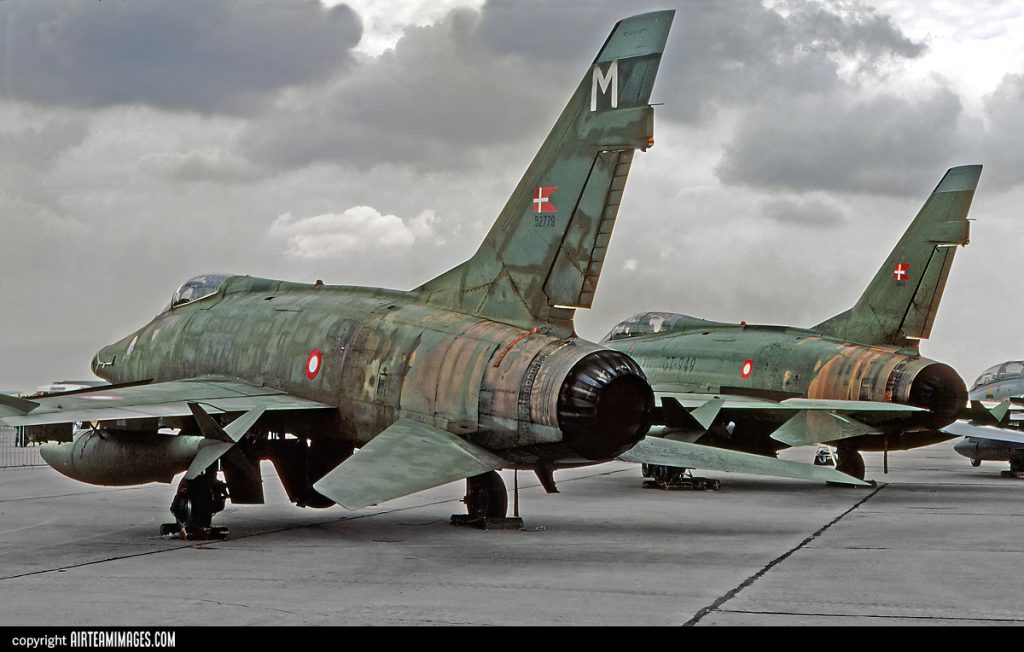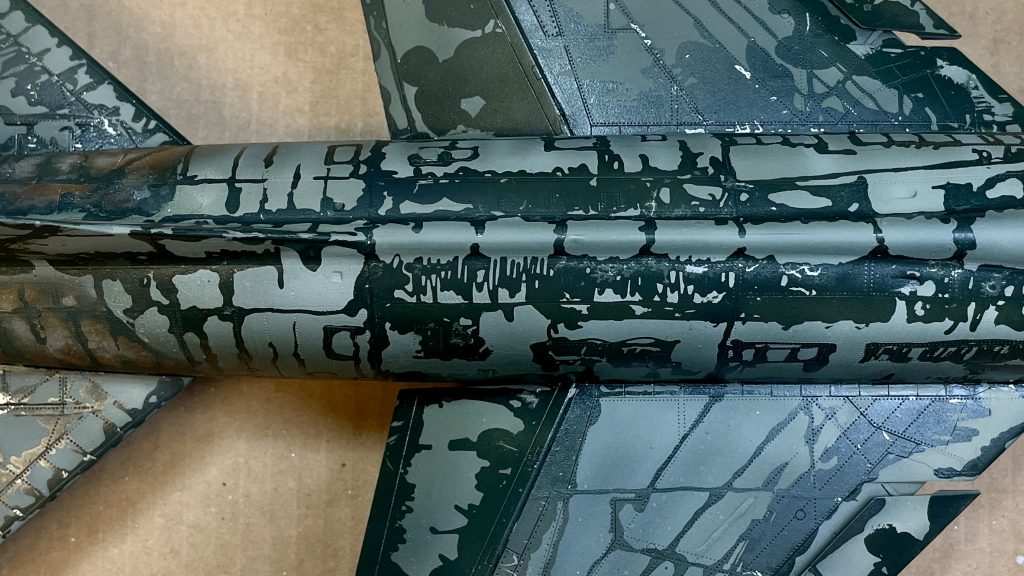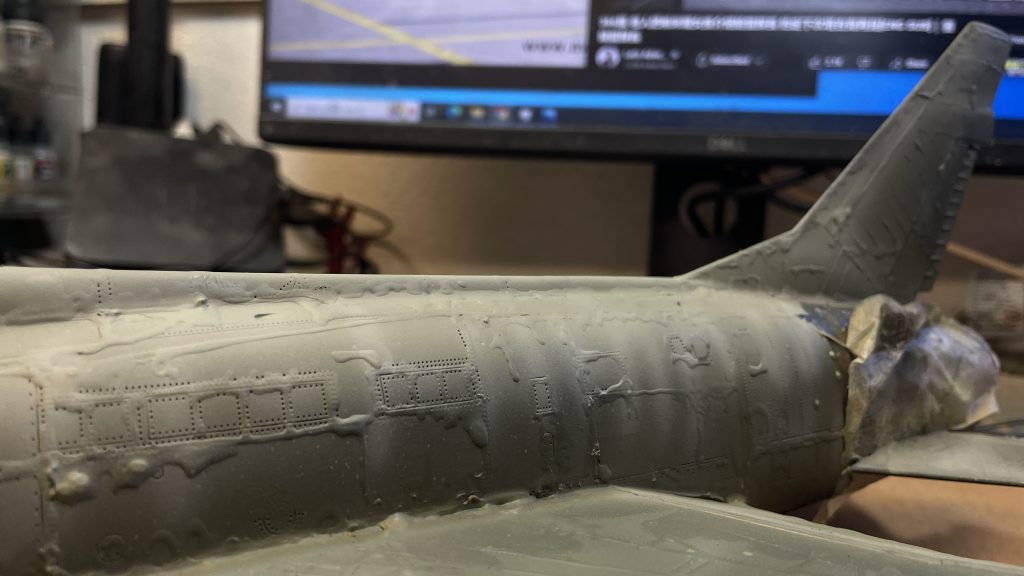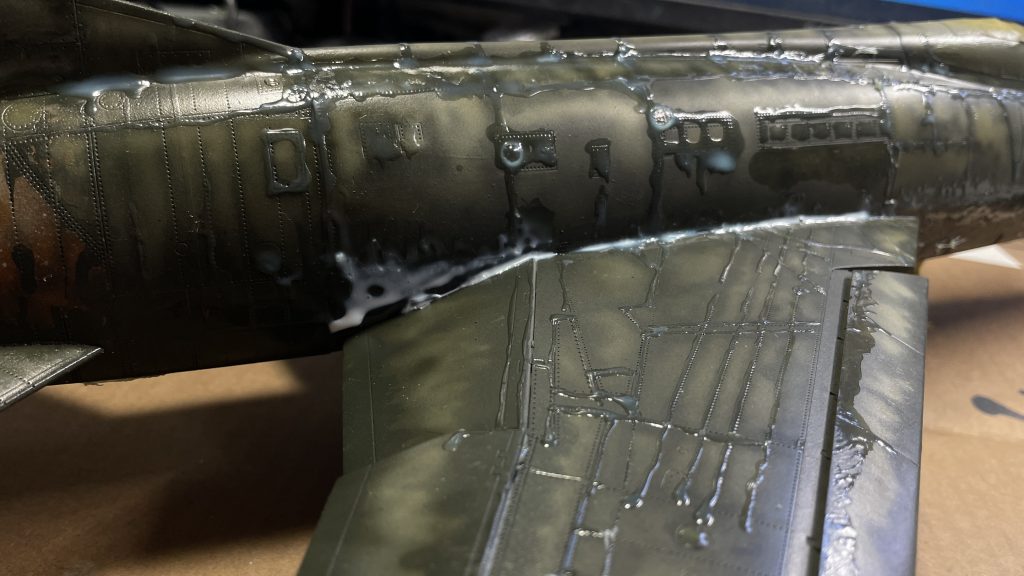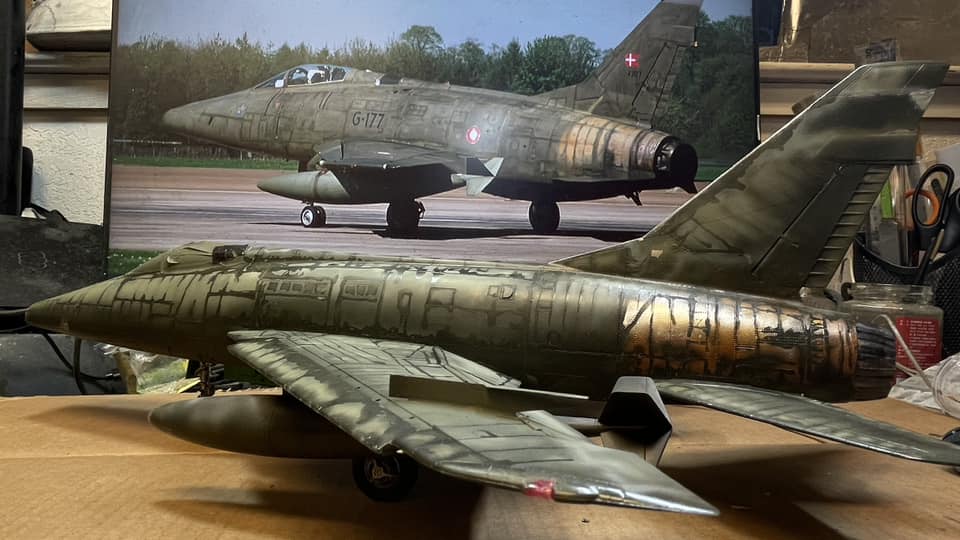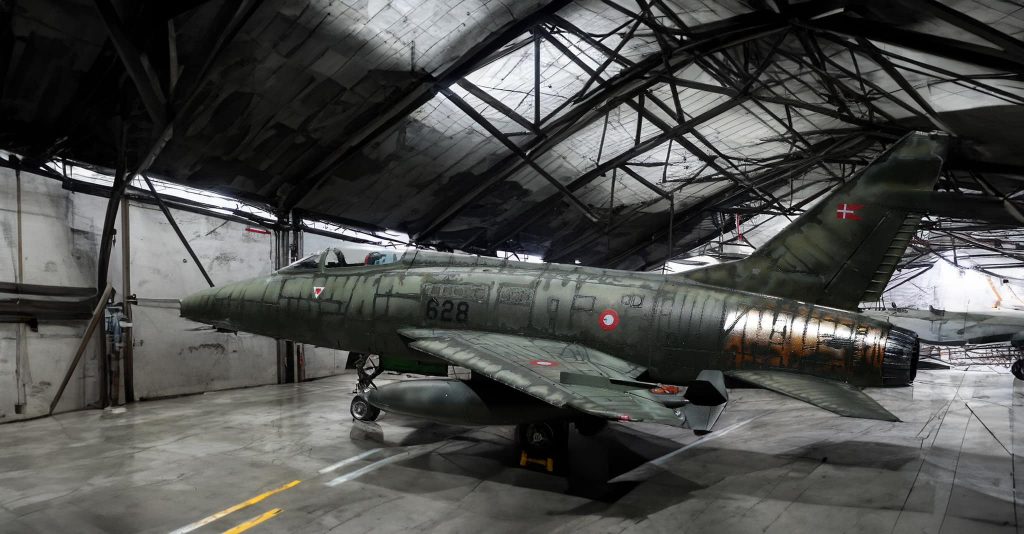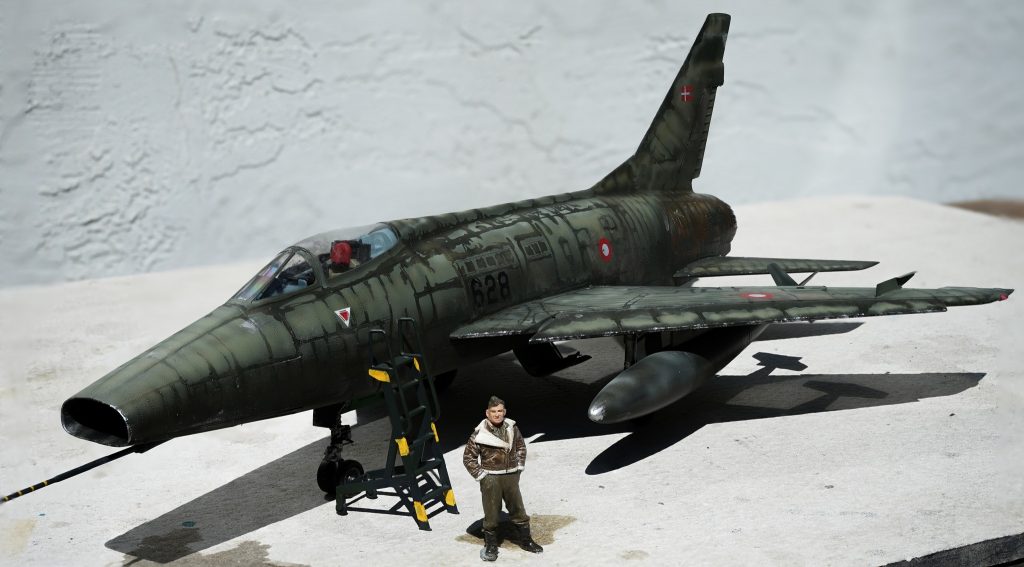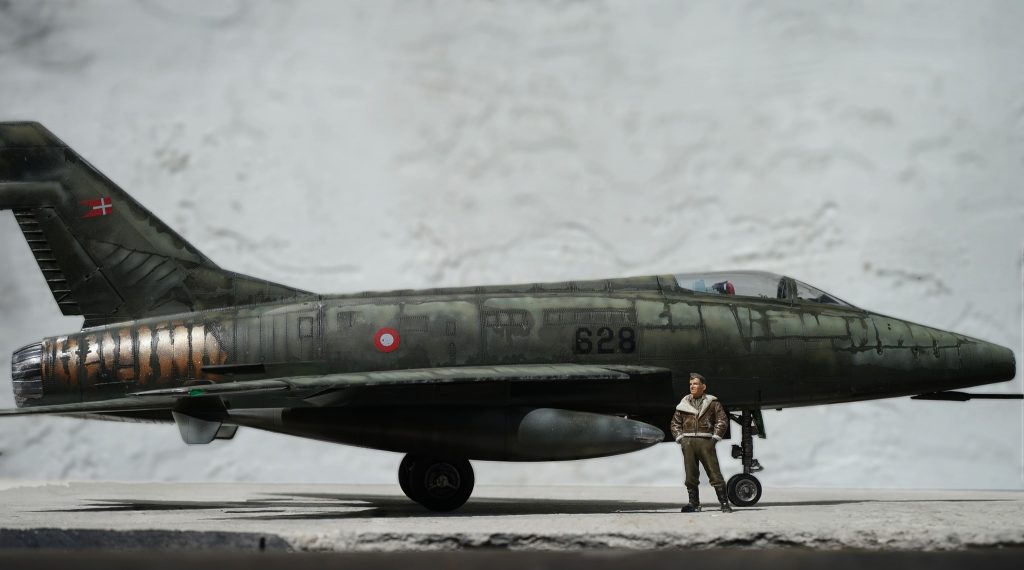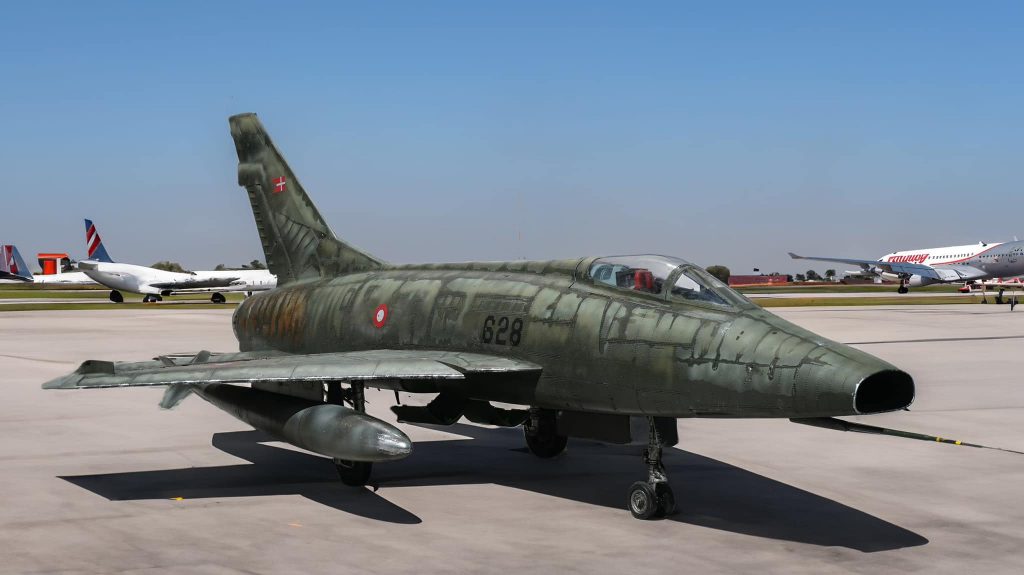Repainting the Cold War – F-100D Super Sabre in Danish Markings (1/32)
This 1/32 F-100D Super Sabre began its life as a pre-finished kit in natural metal finish—clean, factory-polished, and ready for the shelf. But everything changed the moment I came across a vintage photo of a Royal Danish Air Force F-100. The image showed a dramatically weathered aircraft with a faded green camouflage scheme and scorched, discolored tail panels. It wasn’t just “old”—it looked like it carried the weight of history.
That one photo was all it took. I decided to strip the model and repaint it from the ground up, aiming not just to reproduce the camouflage, but to capture the surface story of a well-worn Cold War jet.
One of the key effects I experimented with in this build was the use of fineline liquid masking to simulate long streaks of preservative oil (anti-corrosion fluid), lubricant leaks, or protective coating residue—the kind of marks you’d often find along the panels of aircraft that had seen frequent maintenance in harsh weather conditions. After airbrushing the main camouflage layers, these subtle streaks emerged naturally, just like they would on the real airframe after time and use.
This project also gave me the chance to try a non-symmetrical weathering approach—instead of mirroring wear and tear on both sides, I treated the aircraft like a living machine: exposed to sun on one side, patched on the other; freshly repainted here, faded and chipped there. The fuselage center was built up with layers of soft tonal shifts and partial repainting, while the tail section became the focal point—with heat staining, metal discoloration, and charred grime built up over multiple passes using oils, washes, and dry brushing.
📸 For the final presentation, I photographed the model in natural light and added a few digitally composited scenes—hinting at a cold, cloudy flightline somewhere in Denmark during the mid-Cold War years. The goal wasn’t just realism—it was atmosphere.
This aircraft may not be pristine, but that’s exactly the point. It’s built to feel like a machine that has stories to tell—stories of patrols flown, ground crews worked, and time slowly etched into aluminum skin.


